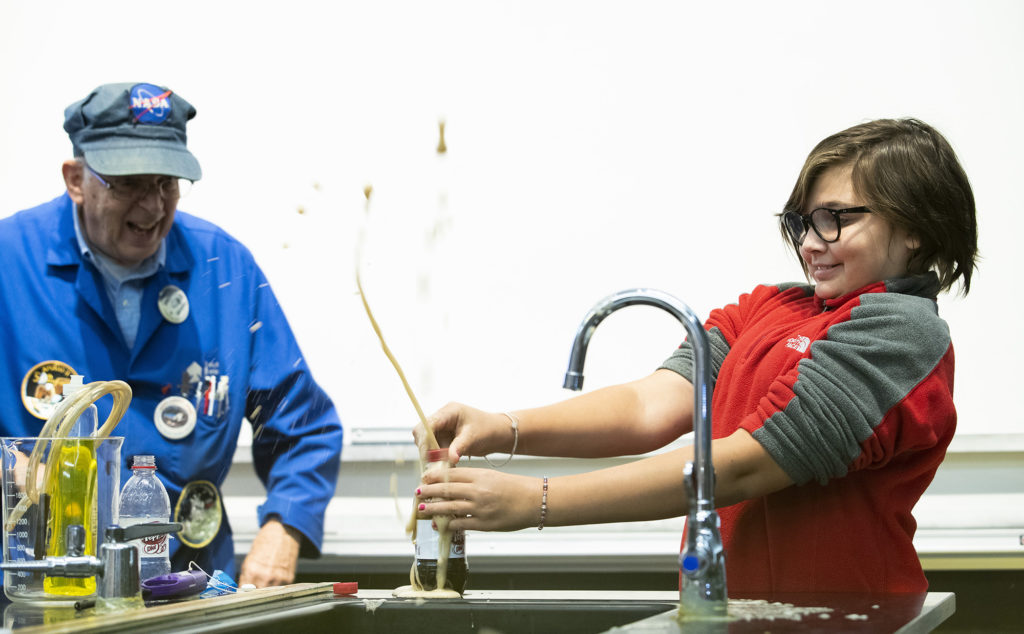
If you weren’t around yet to experience the first moon landing live on July 20, 1969, the University of West Georgia had you covered.
UWG Department of Physics celebrated the 50th anniversary of the landing with “The Eagle Has Landed,” an opportunity to experience the landings from the UWG campus at Crider Hall in the Boyd Building.
Hosted by Dr. Ben de Mayo, professor emeritus of physics, and Dr. Javier Hasbun, professor of physics, the public presentation emphasized the technologies and courage that took the world’s first humans to the moon.
“The Apollo 11 moon landing was the first time any person set foot on an object beyond Earth,” de Mayo said. “It was both an amazing human and technological achievement.”
Not much was known about the moon at the time. NASA deduced that it was covered with dust, but they did not know the depth. One concern was that the lunar module – the Eagle – may sink into the soft dust and not be able to leave.
Another concern was that astronauts may encounter extraterrestrial germs.
“The astronauts were quarantined for over three weeks upon their return to prevent the spread of any bad stuff they might have brought back,” de Mayo said. “The opposite – that the astronauts contaminated the moon – is more likely true.”
Sponsored by the NASA-funded Georgia State Space Grant Consortium and the UWG Physics Department, the event took place in a theater-style lecture hall with a large screen for spectacular visual presentations. These included images, video and more.
Starry Night Pro Plus software further provided simulations of the night sky as seen from Earth 50 years ago, as well as stunning visualizations of the lunar landing site and its view of Earth on the big screen.
“The landing site was far rockier than expected, scattered with refrigerator-sized boulders,” de Mayo said. “It’s a testament to Neil Armstrong’s piloting skills that he was able to land the lunar module at all, hovering the craft in search of a safe landing area. They set down with only 25 seconds of fuel remaining, a very close call.”
Rounding out the evening, de Mayo and Hasbun demonstrated some of the technologies used to achieve this first, extraterrestrial landing. Often with the assistance of audience members, they demonstrated fuel concentration with use of liquid nitrogen, created a sonic boom, used electricity to make objects float and demonstrated electrical propulsion among other technical displays.
Scale models of the spacecraft demonstrated the complexity of the mission, including the multi-stage rockets and the rendezvous of the lunar module – containing Buzz Aldrin and Neil Armstrong – with the Command Module in lunar orbit with Michael Collins piloting.
“It’s technically an amazing feat,” de Mayo said. “On top of that, space is a dangerous place. The conditions were cramped and uncomfortable, and no one knew entirely what to expect. The courage of these astronauts and those who followed cannot be overstated.”





